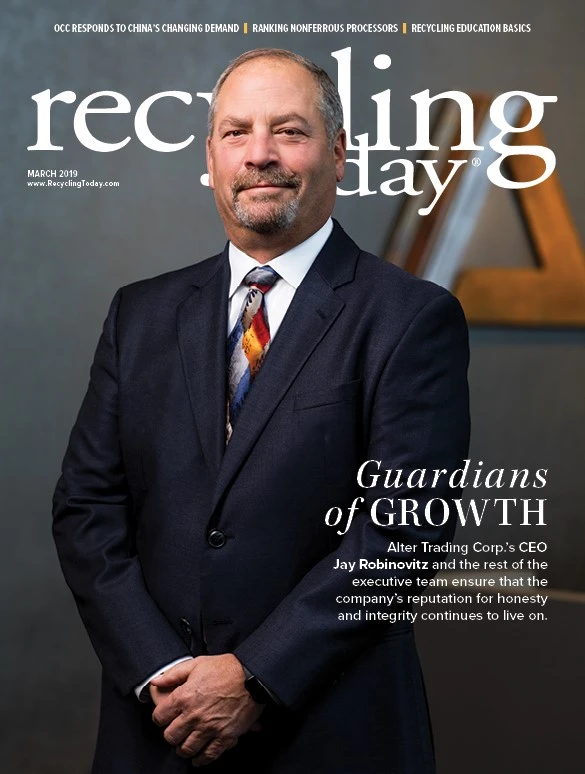
The recycling industry has been adjusting to unprecedented changes since China introduced its National Sword campaign in 2017. Postconsumer plastic scrap was the first casualty of China’s effort to cut out lower quality scrap imports that had been entering its ports. The country’s policy was later expanded to include quality requirements that producers of various secondary commodities from paper to metals can find difficult to attain as well as an evolving list of scrap materials that have been banned or are to be banned. As if these changes were not enough, a trade war between the U.S. and China has led to higher tariffs on nonferrous scrap imports entering China from the U.S.
Spurred on by these changes, U.S. recyclers and traders have had to investigate alternative international and domestic markets with which to trade scrap commodities. Others have invested in processing equipment that helps them attain China’s 0.5 percent contamination threshold or make mill-ready grades that are welcomed by consumers near and far.
The subject of this issue’s Cover Story is among the companies that have invested in their processing capabilities. Jay Robinovitz, CEO of Alter Trading Corp., St. Louis, says the company started planning for changes in China following the introduction of Operation Green Fence in 2013. That policy was designed to enforce quality standards for imported materials that were often ignored. By 2015, Alter was installing a heavy media plant in Davenport, Iowa, to further process shredded nonferrous scrap that already has been processed by the company’s nonferrous scrap recovery systems.
"U.S. recyclers and traders have had to investigate alternative international and domestic markets with which to trade scrap commodities.”
Recyclers with operations in China also are pondering investments outside that country. Steve Wong, the founder of Fukutomi Co. Ltd., a Hong Kong-based plastics recycler, whose operations have been affected by China’s scrap import restrictions, is looking
With all the changes that have been affecting the industry, Recycling Today has decided to embark on a few of our own, granted they are not nearly as dramatic as those the industry is facing. With this issue, you’ll notice a new look that extends from our cover through our Fresh Perspectives department.
Our goal with this redesign was to streamline and modernize the magazine. We think our Graphic Designer Natasha Ringnalda did a great job, and we’re eager to hear what you think. Stop by Booth No. 1725 at ISRI2019 to tell us how we did. While you’re at it, we’d love to hear how your company has been adjusting to the changing global markets for recyclables.

Explore the March 2019 Issue
Check out more from this issue and find your next story to read.
Latest from Recycling Today
- APR, RecyClass release partnership progress report
- Clearpoint Recycling, Enviroo sign PET supply contract
- Invista expanding ISCC Plus certification program
- Redwood partnership targets recycling of medium-format batteries
- Enfinite forms Hazardous & Specialty Waste Management Council
- Combined DRS, EPR legislation introduced in Rhode Island
- Eureka Recycling starts up newly upgraded MRF
- Reconomy Close the Gap campaign highlights need for circularity





